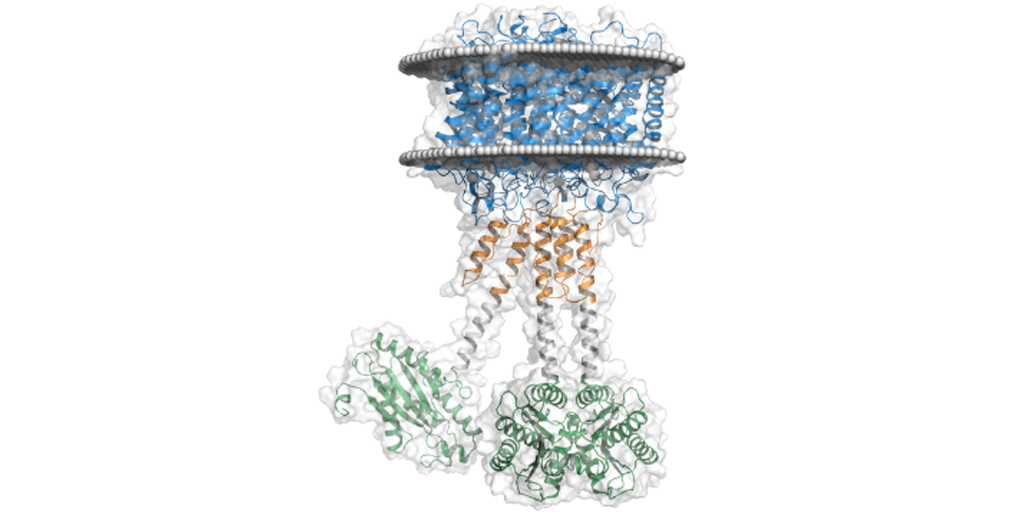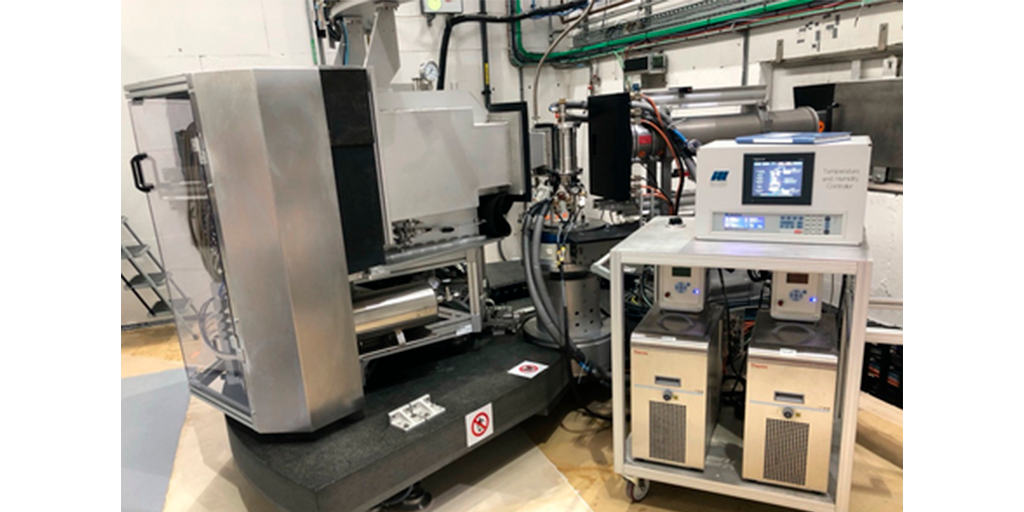Unlike other proteins that transport water or potassium, ammonium transporters (Amts) are special because they can tell ammonium apart from potassium and water. This special ability helped them evolve to become ammonium sensors. Exploring ammonium sensing in biological systems provides insights into essential processes, such as the regulation of nutrient uptake or cellular signaling.
Now a team of scientists from the University of Freiburg has characterised a new membrane protein, called Sd-Amt1, that allows microorganisms to repurpose ammonium transporters (Amts) as receptors.
The researchers looked at the structure of this receptor both with and without ammonium attached, at very high detail (down to 1.7 and 1.9 Ångstroms). This helped them understand how the receptor switches between “ON” (with ammonium) and “OFF” (without ammonium) states. The newly discovered protein uses ammonium cations as extracellular signals to increase the cytoplasmic level of the secondary messenger cyclic-di-GMP. It consists of a membrane-integral ammonium receptor domain linked to a cytoplasmic diguanylate cyclase transducer module.

About ESRF
The ESRF is the world-leading source of synchrotron and a centre of excellence for fundamental and innovation-driven research for imaging and studying the structure of matter at the atomic and nanometric scale in all fields of research. Located in Grenoble, the ESRF owes its success to the international co-operation of 22 partner nations, of which 13 are Members and 9 are Scientific Associates. Following on from 20 years of success and scientific excellence, the ESRF launched the ESRF-EBS -Extremely Brilliant Source- project (150M€ over 2015-2022). Centred on rebuilding the ESRF storage ring, EBS will deliver unprecedented source brilliance and coherence (~100x), offering scientists with a powerful new instrument to look even deeper into the structure of materials and living matter. EBS also includes the construction of new state-of-the-art beamlines, a scientific instrumentation programme with ambitious detector projects and a data management and analysis strategy.
Unlike other proteins that transport water or potassium, ammonium transporters (Amts) are special because they can tell ammonium apart from potassium and water. This special ability helped them evolve to become ammonium sensors. Exploring ammonium sensing in biological systems provides insights into essential processes, such as the regulation of nutrient uptake or cellular signaling. Now […]



